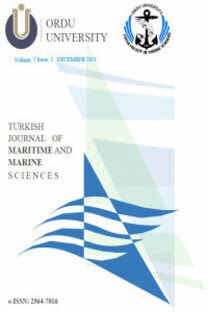Individual and combined effects of copper and lead on the marine shrimp, Palaemon adspersus Rathke, 1837 (Decapoda: Palaemonidae)
yaşayabilme, kurşun, bakır, Palaemonidae, karides, öldürücü doz, ağır metaller, Sinop, toksisite, ölüm oranı
Bakır ve kurşunun deniz karidesi Palaemon adspersus rathke, 1837 (Decapoda: Palaemonidae)'lara ayrı ayrı ve birlikte etkisi
survival, lead, copper, Palaemonidae, shrimps, lethal dose, heavy metals, Sinop, toxicity, mortality,
___
- ISSN: 1300-7122
- Yayın Aralığı: 1
- Başlangıç: 2018
- Yayıncı: -
Phthalate esters in marine algae
Tuncay GEZGİN, Kasım Cemal GÜVEN, Göksel AKÇİN
The algae flora in Tekirdağ-İstanbul coastline
Toxicity of zinc and lead to the polychaete (Hediste diversicolor Müller 1776)
LEVENT BAT, AYŞE GÜNDOĞDU, Mehmet AKBULUT, MEHMET ÇULHA, Hasan Hüseyin SATILMIŞ
Detemination of LAS by HPLC method
Hüseyin KOÇ, Tuncay GEZGİN, Kasım Cemal GÜVEN
LEVENT BAT, Sabri BİLGİN, AYŞE GÜNDOĞDU, Mehmet AKBULUT, MEHMET ÇULHA
